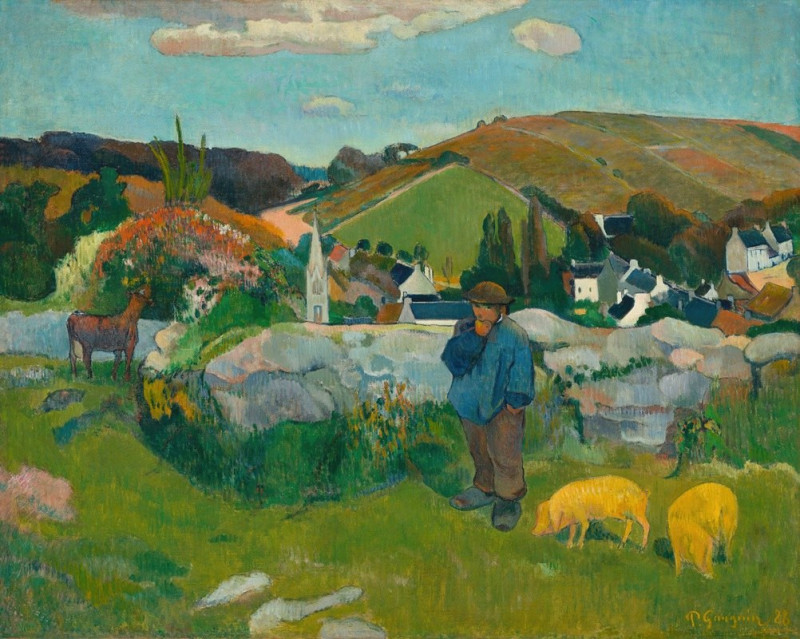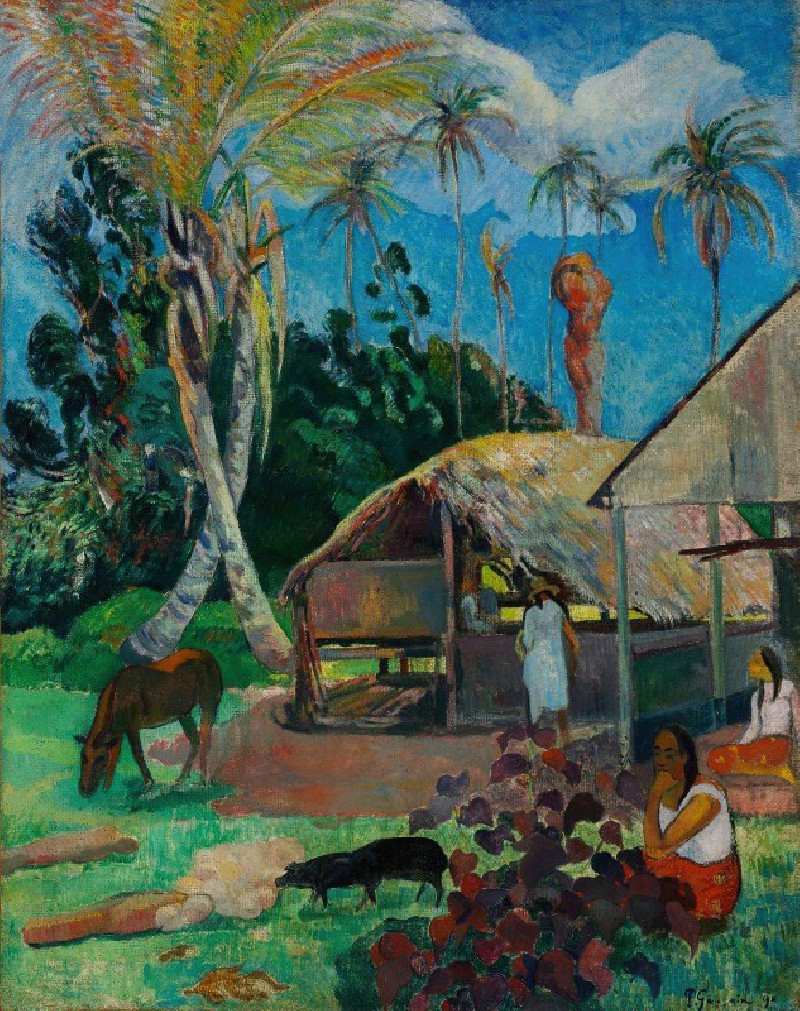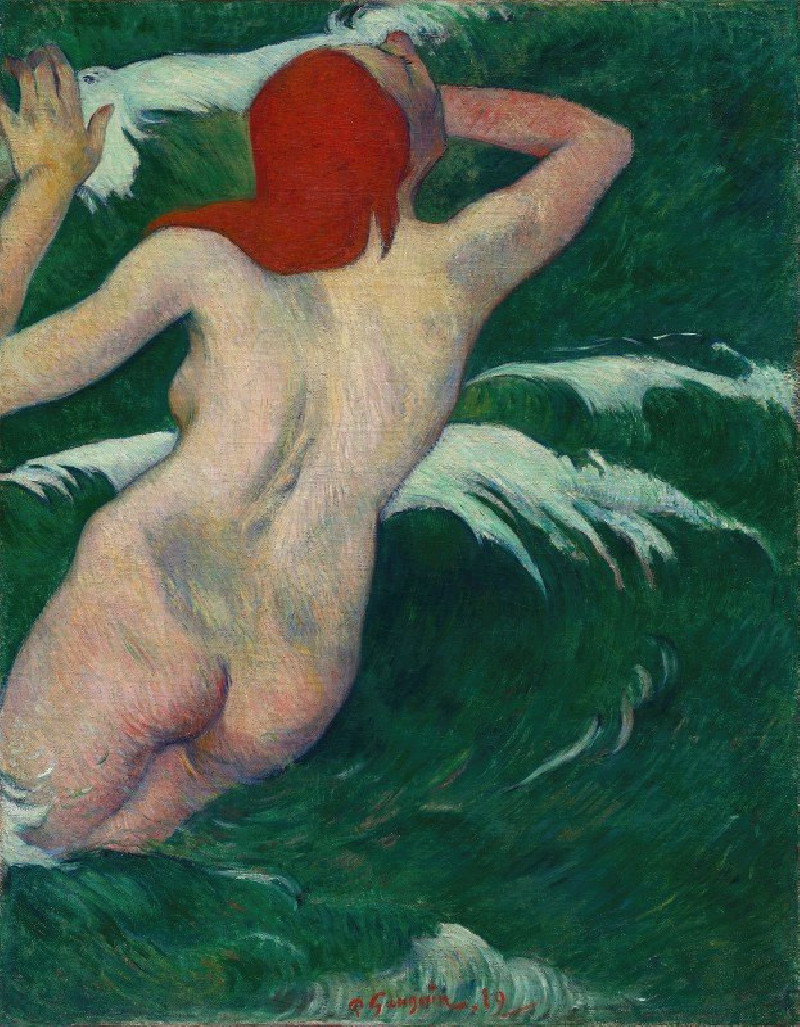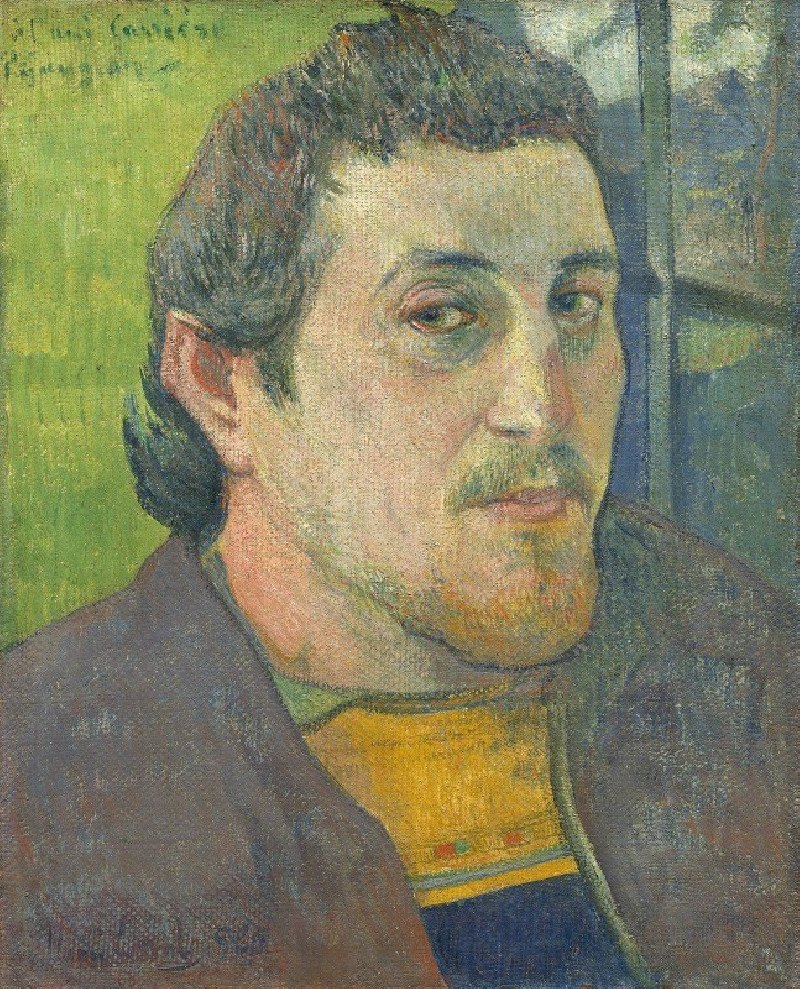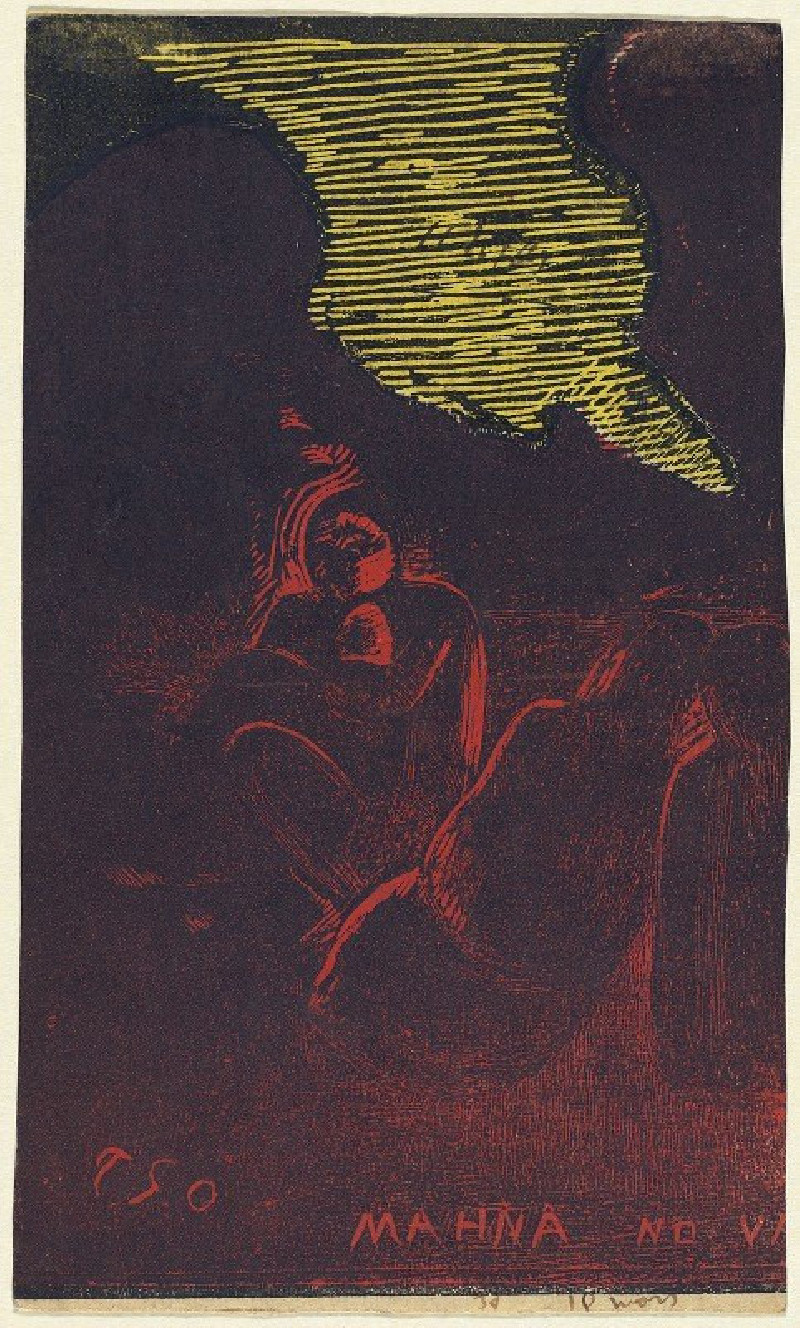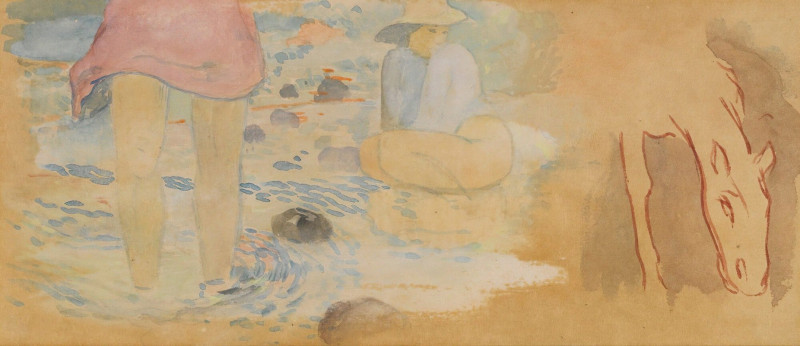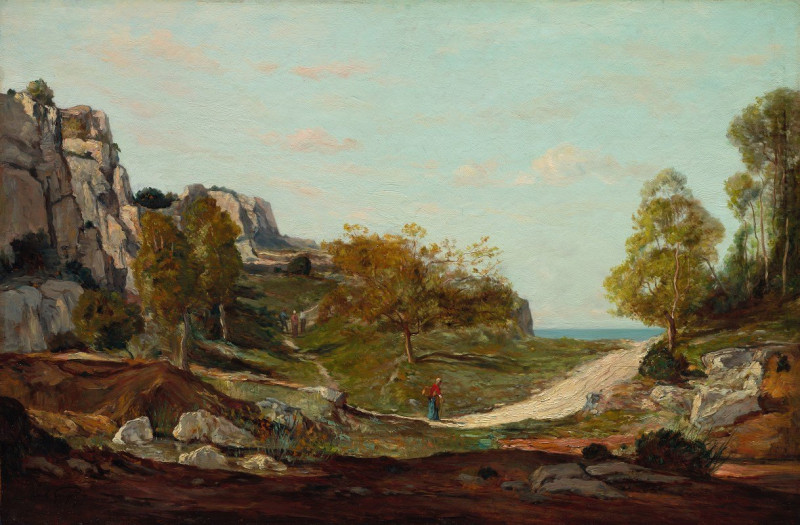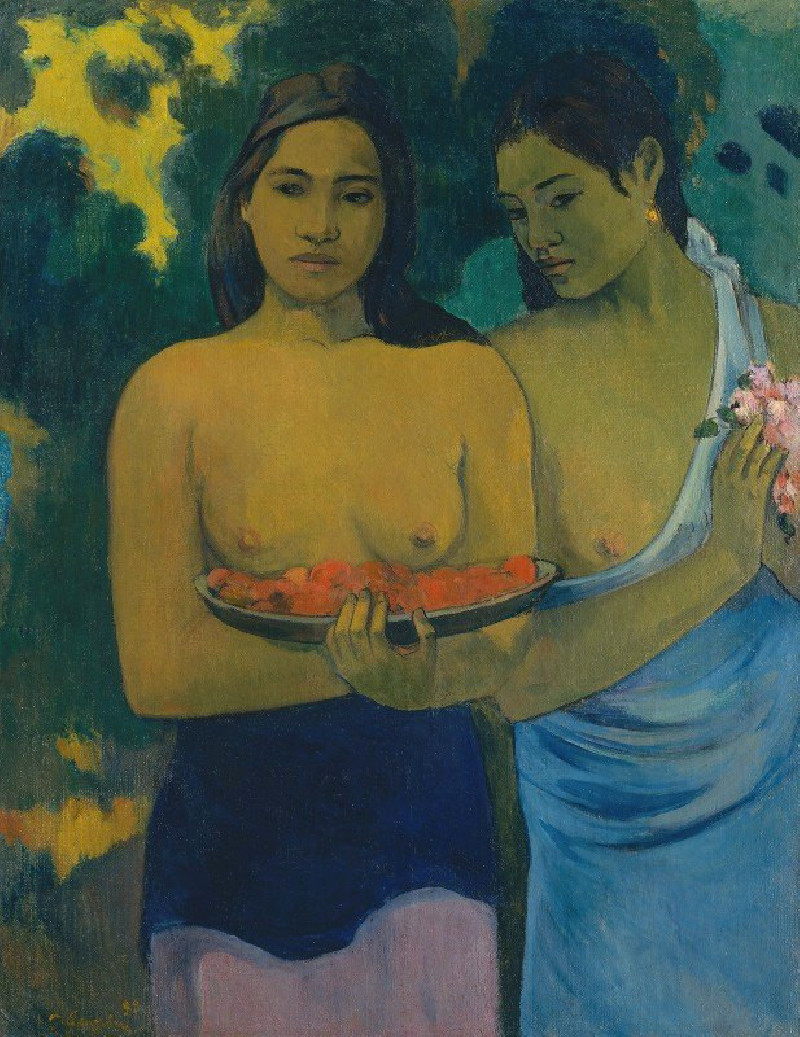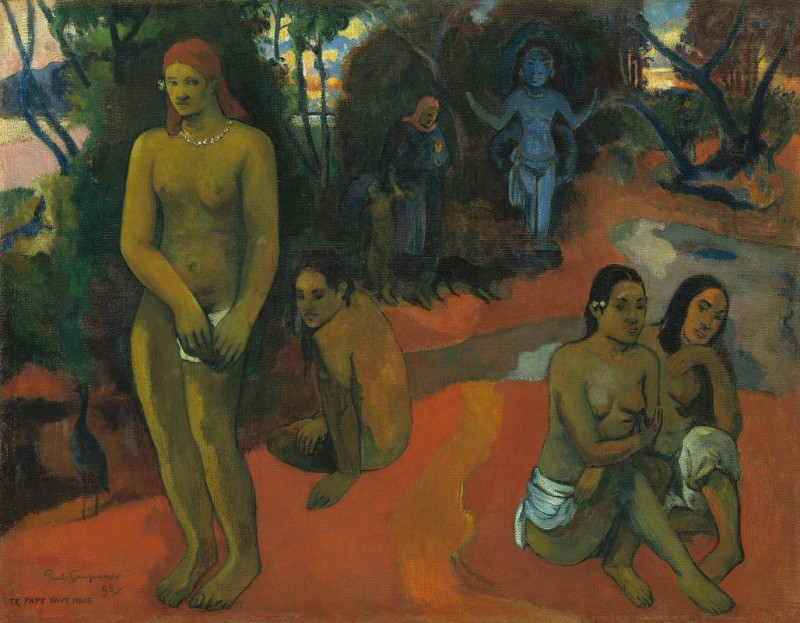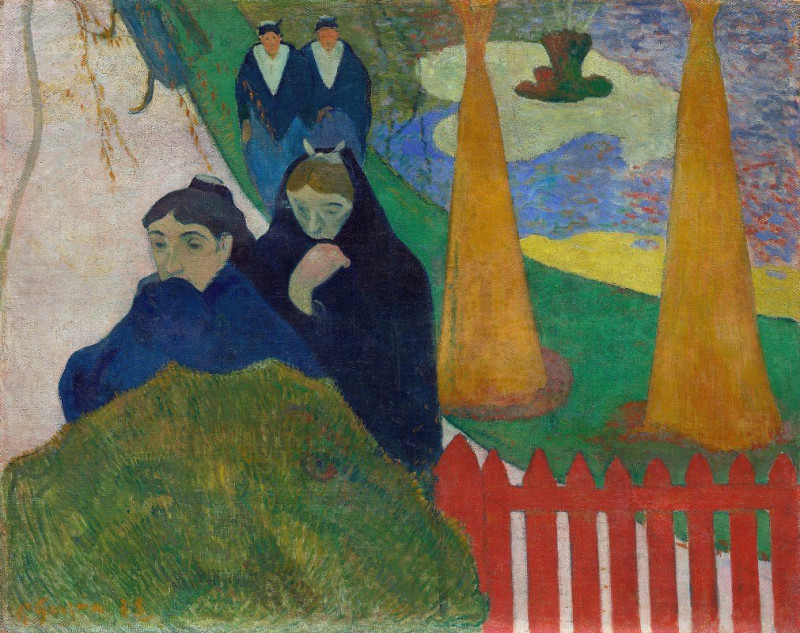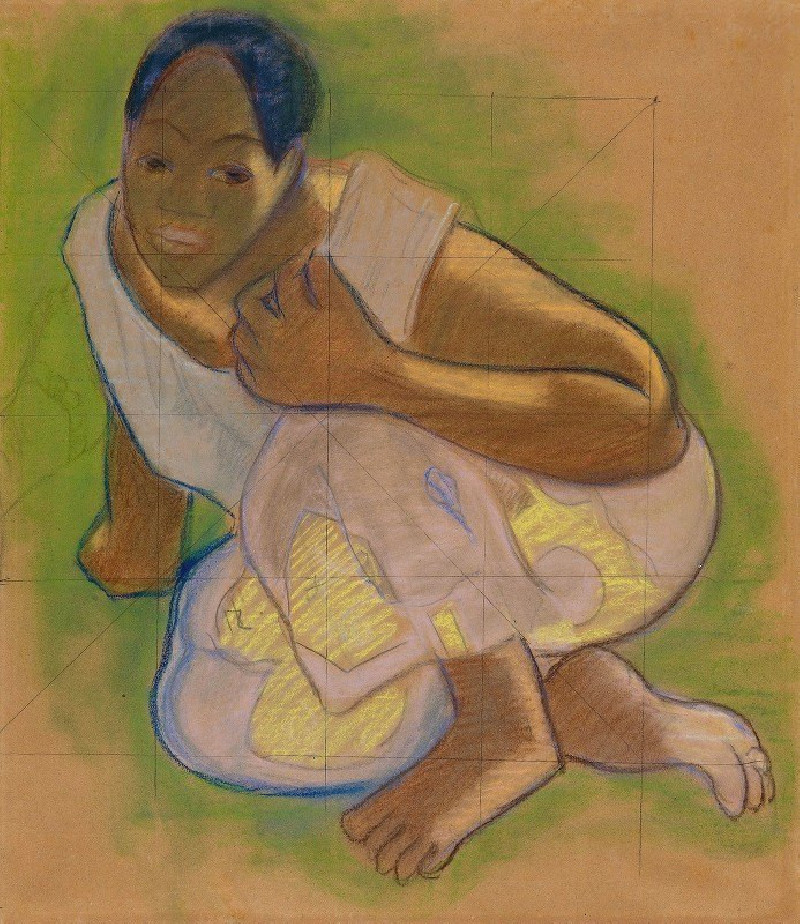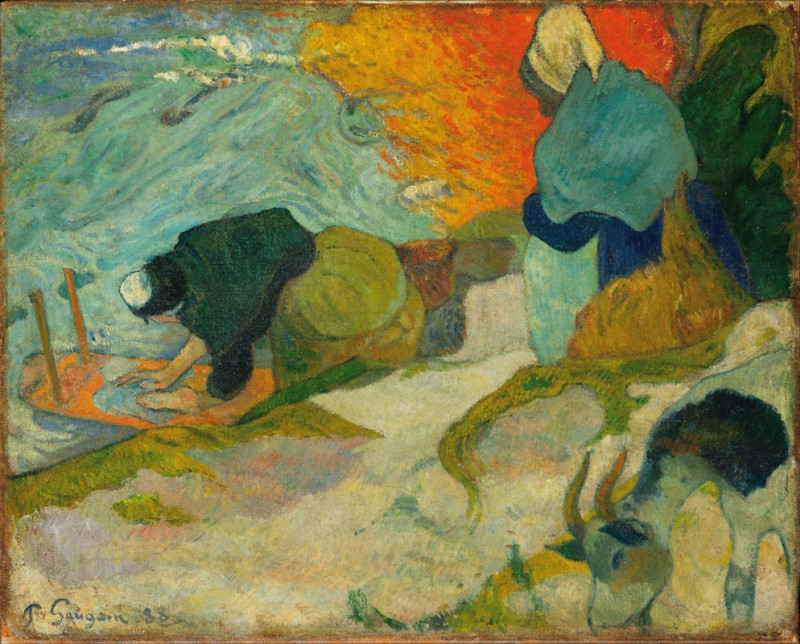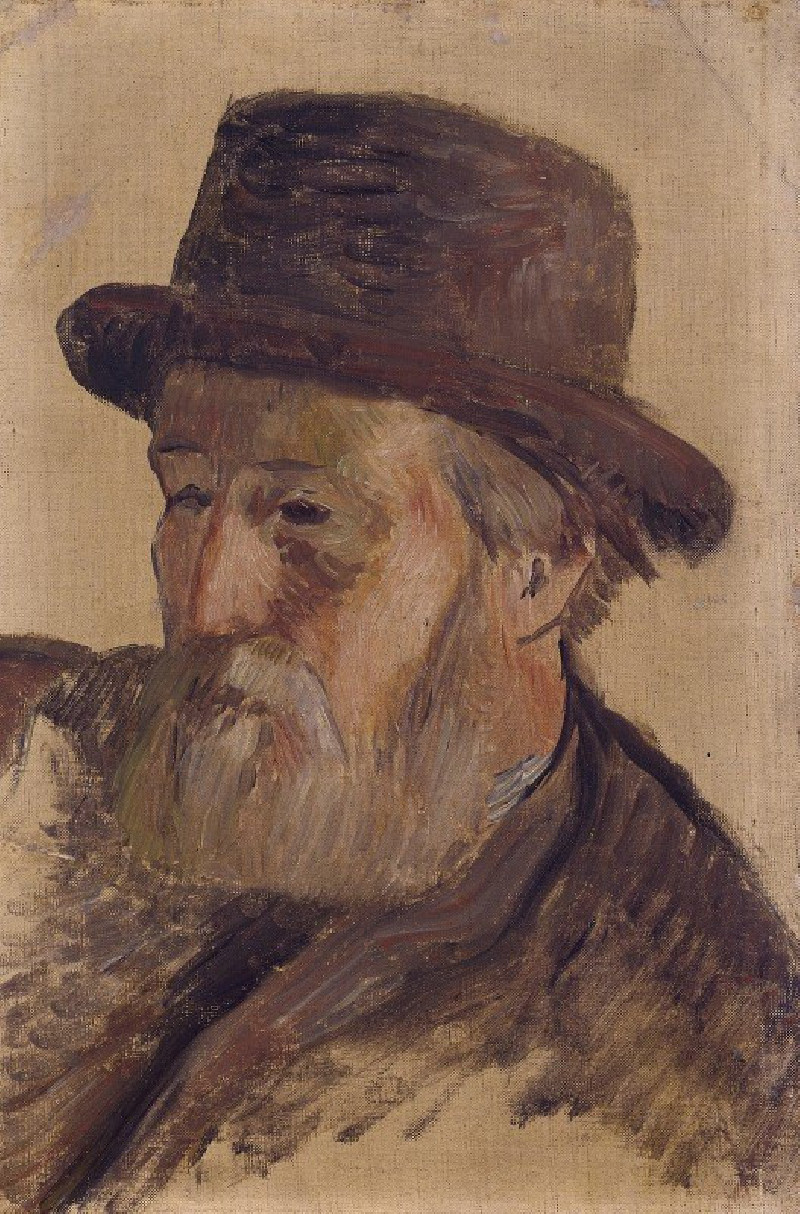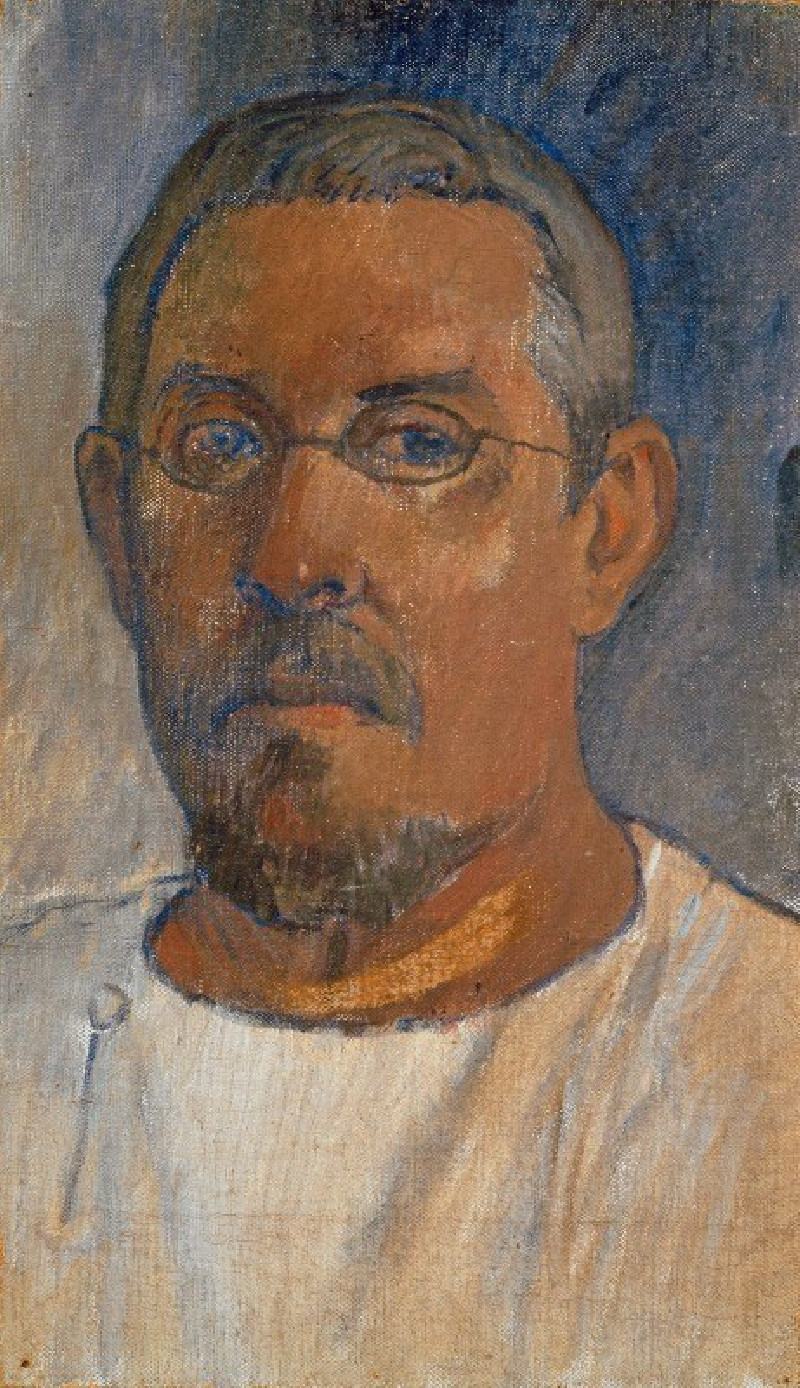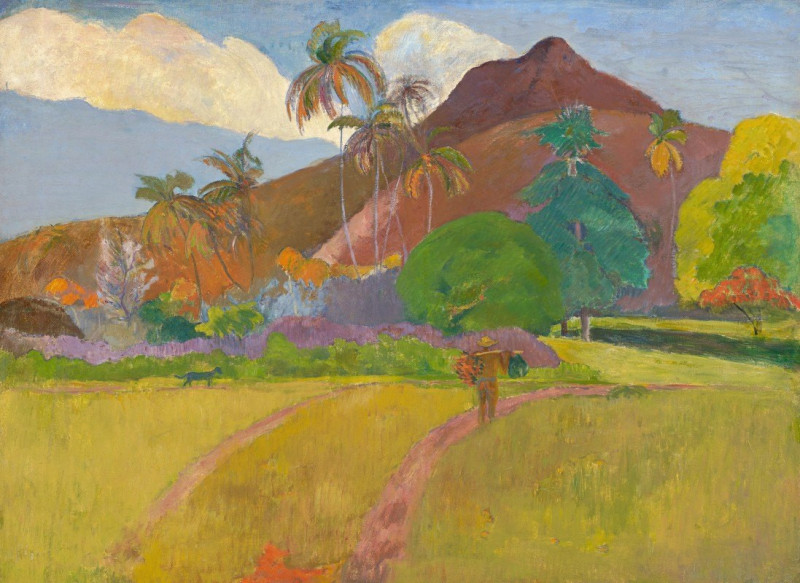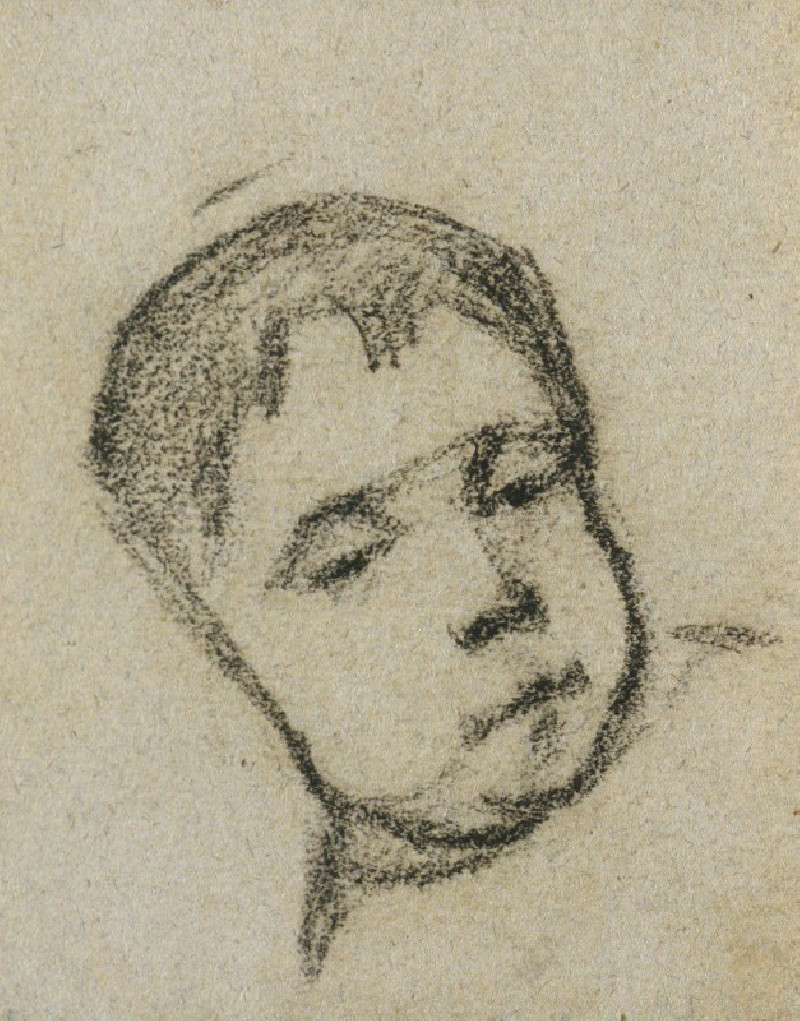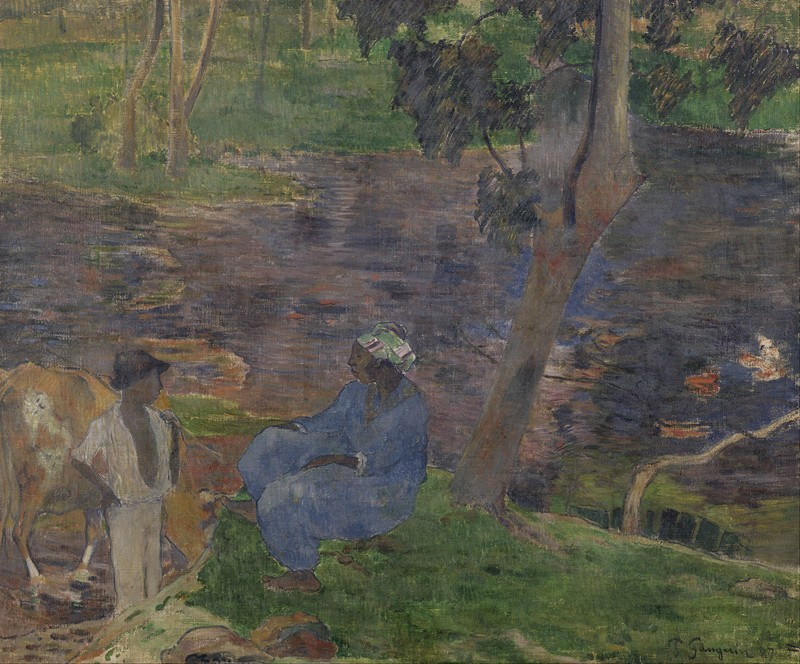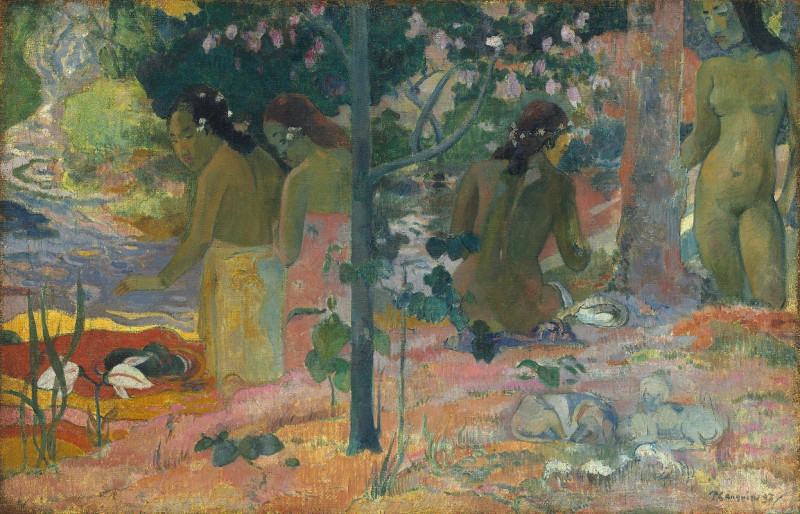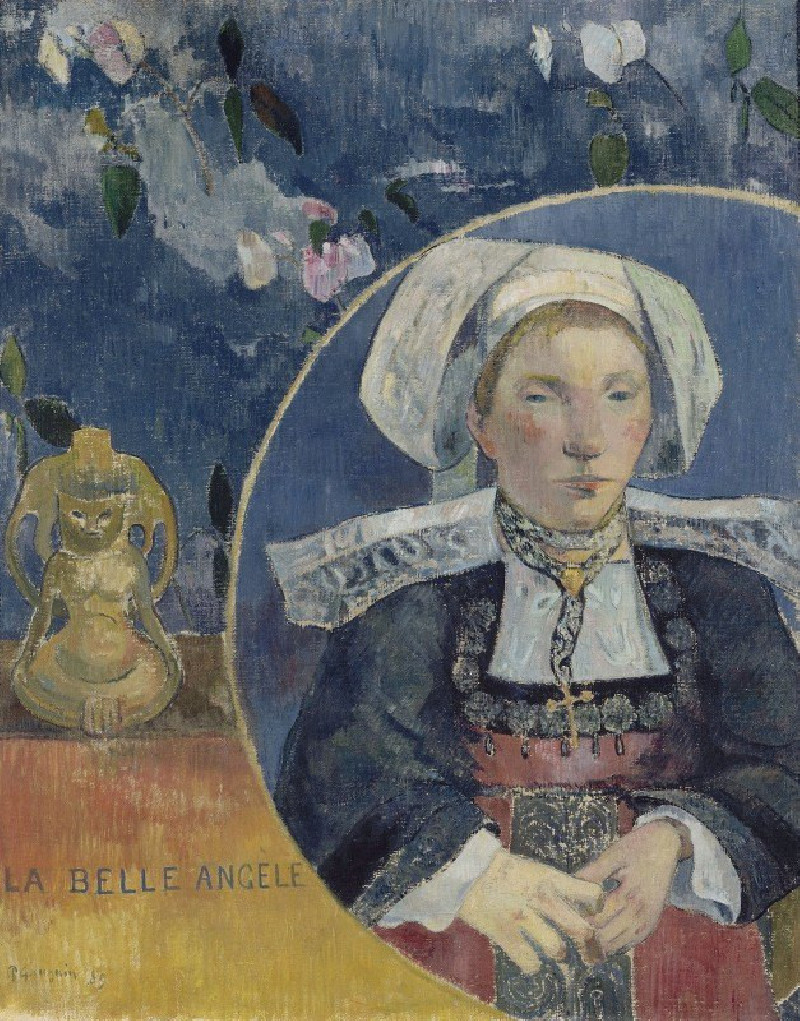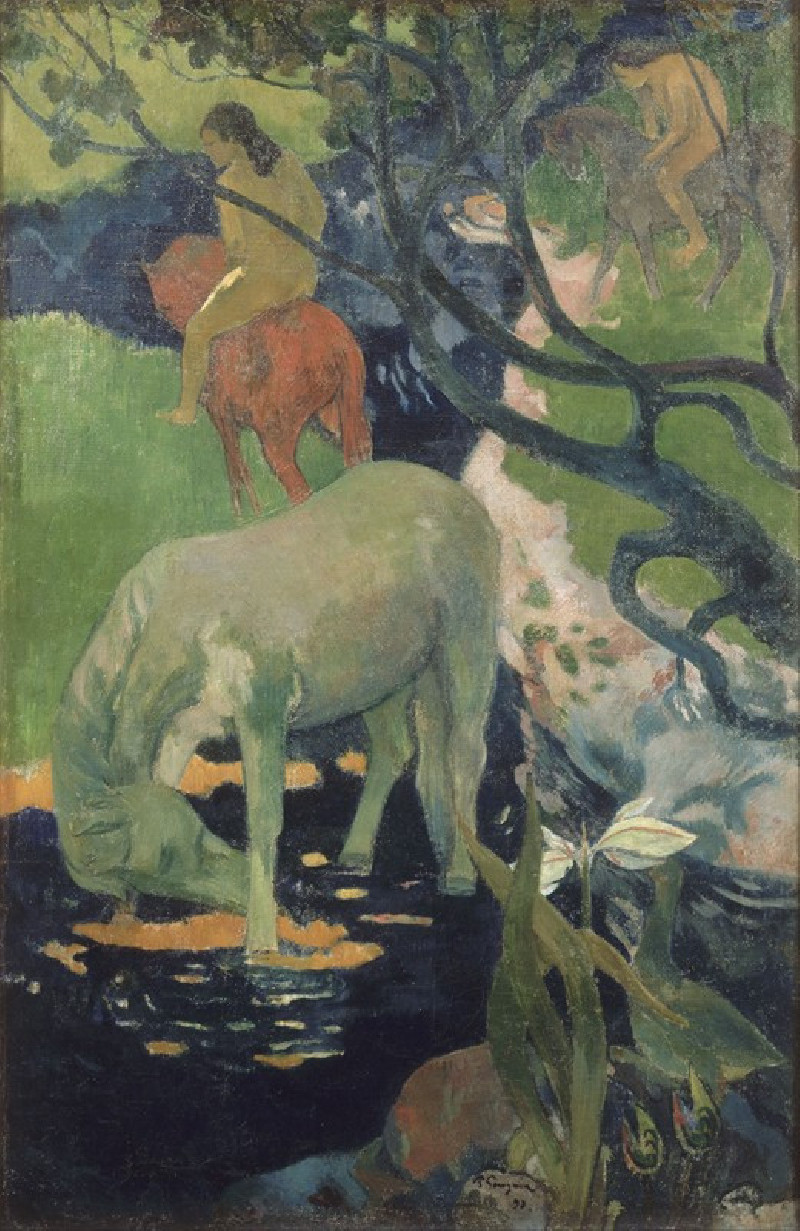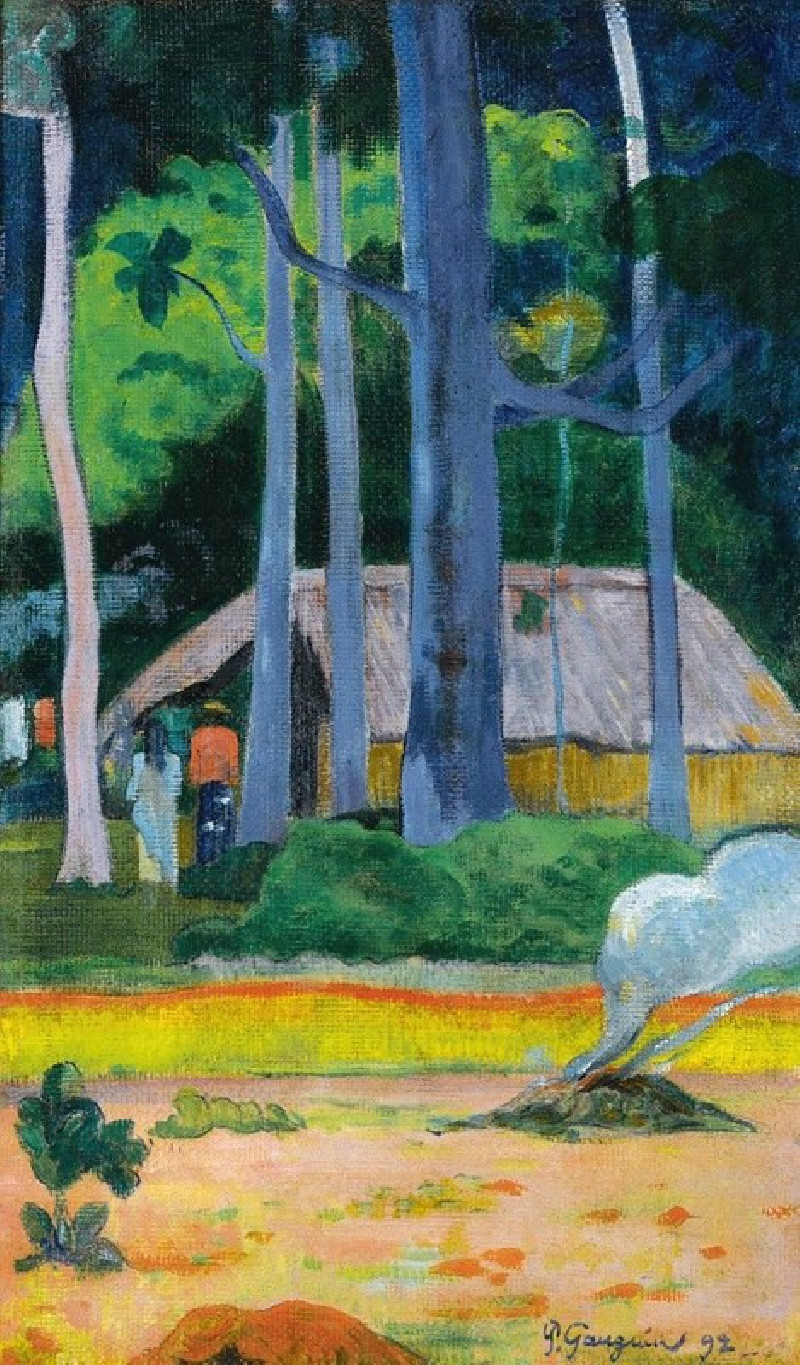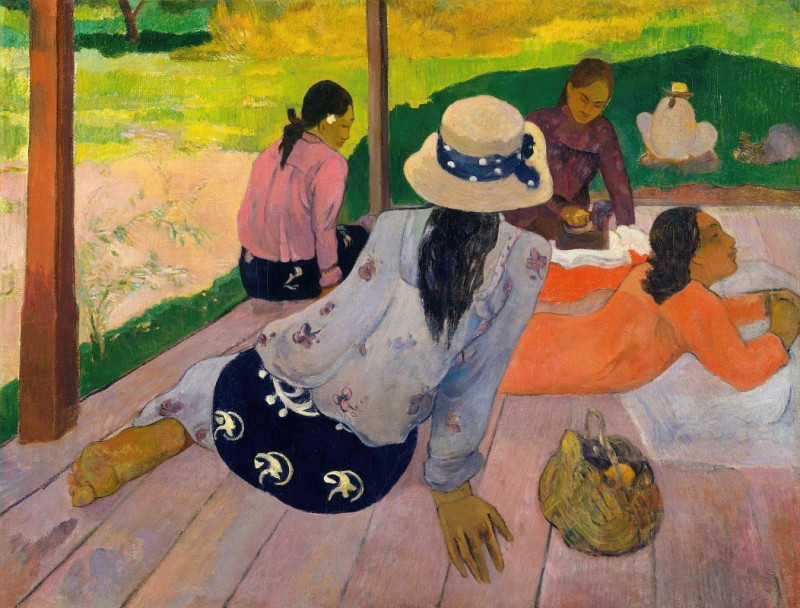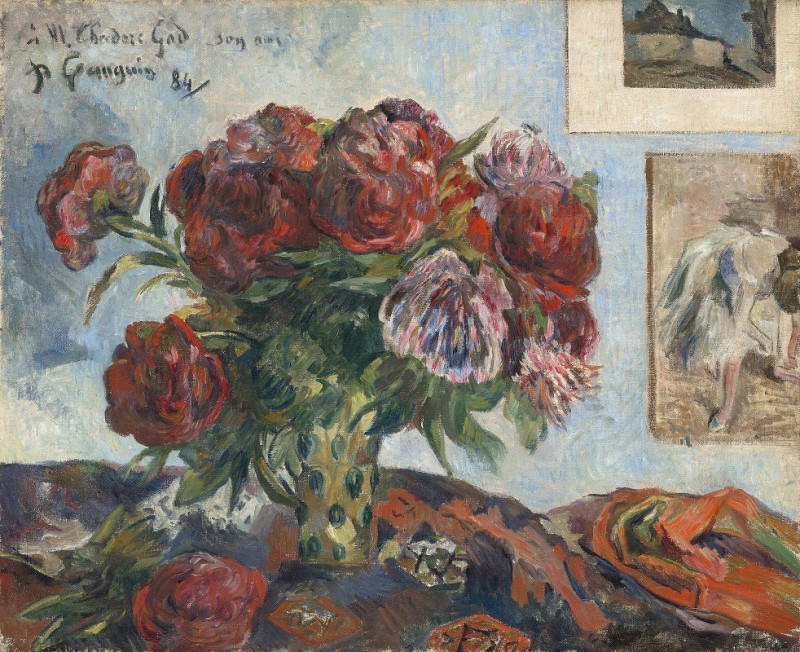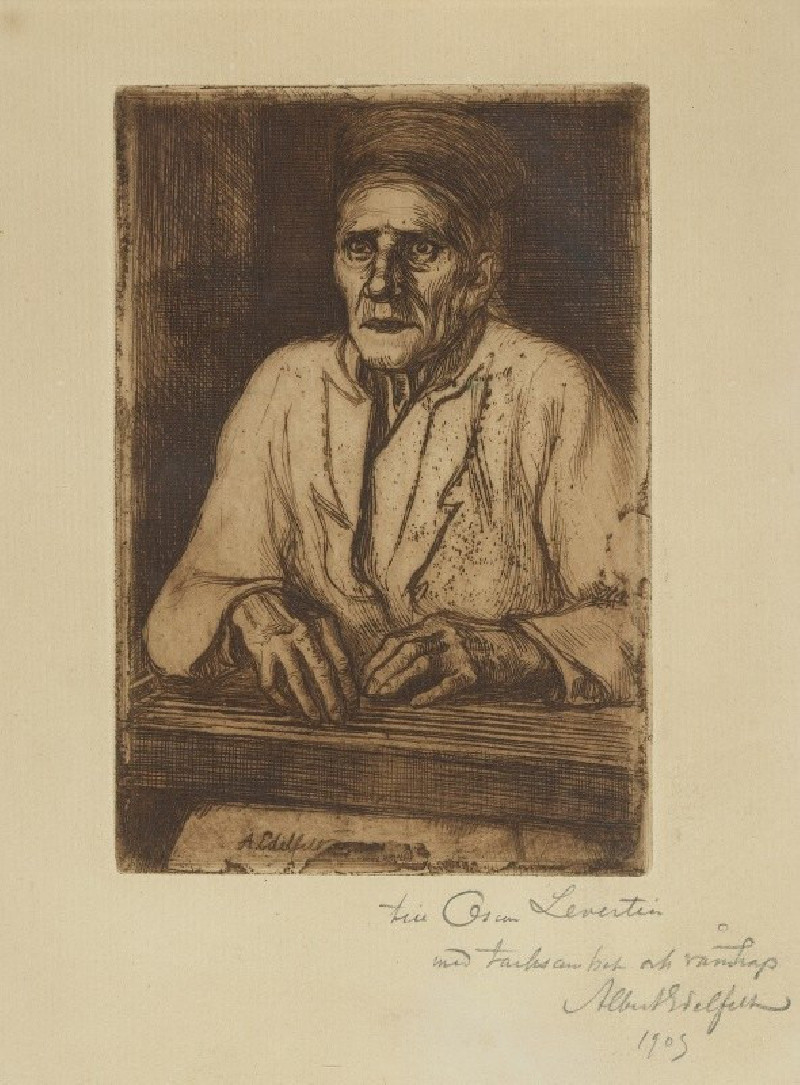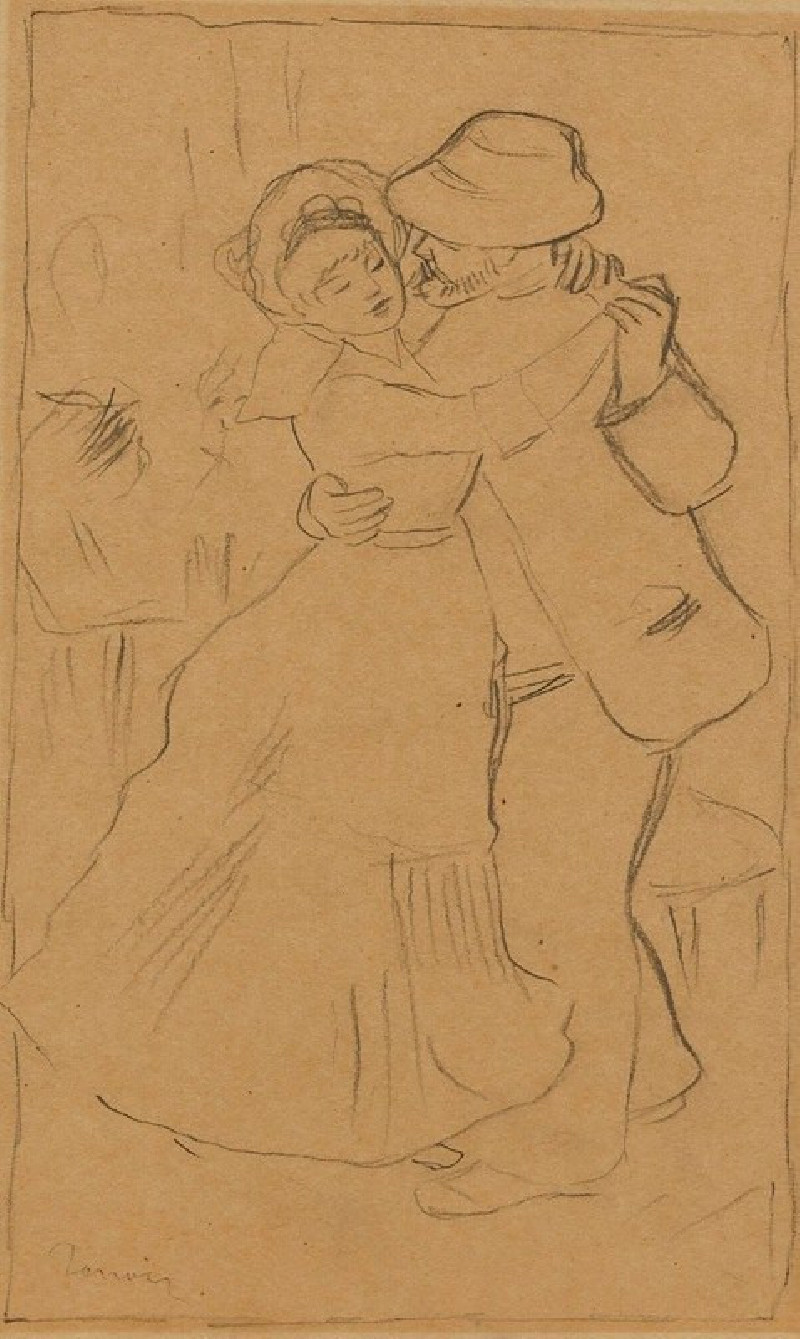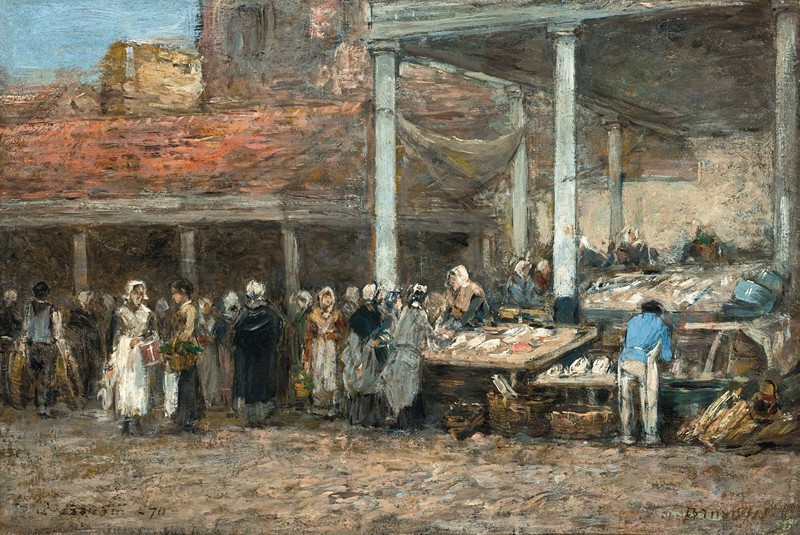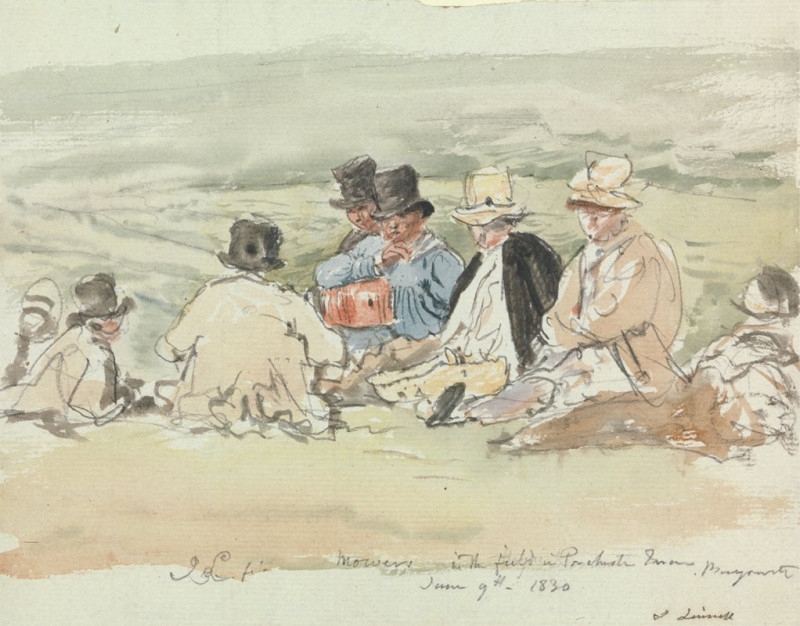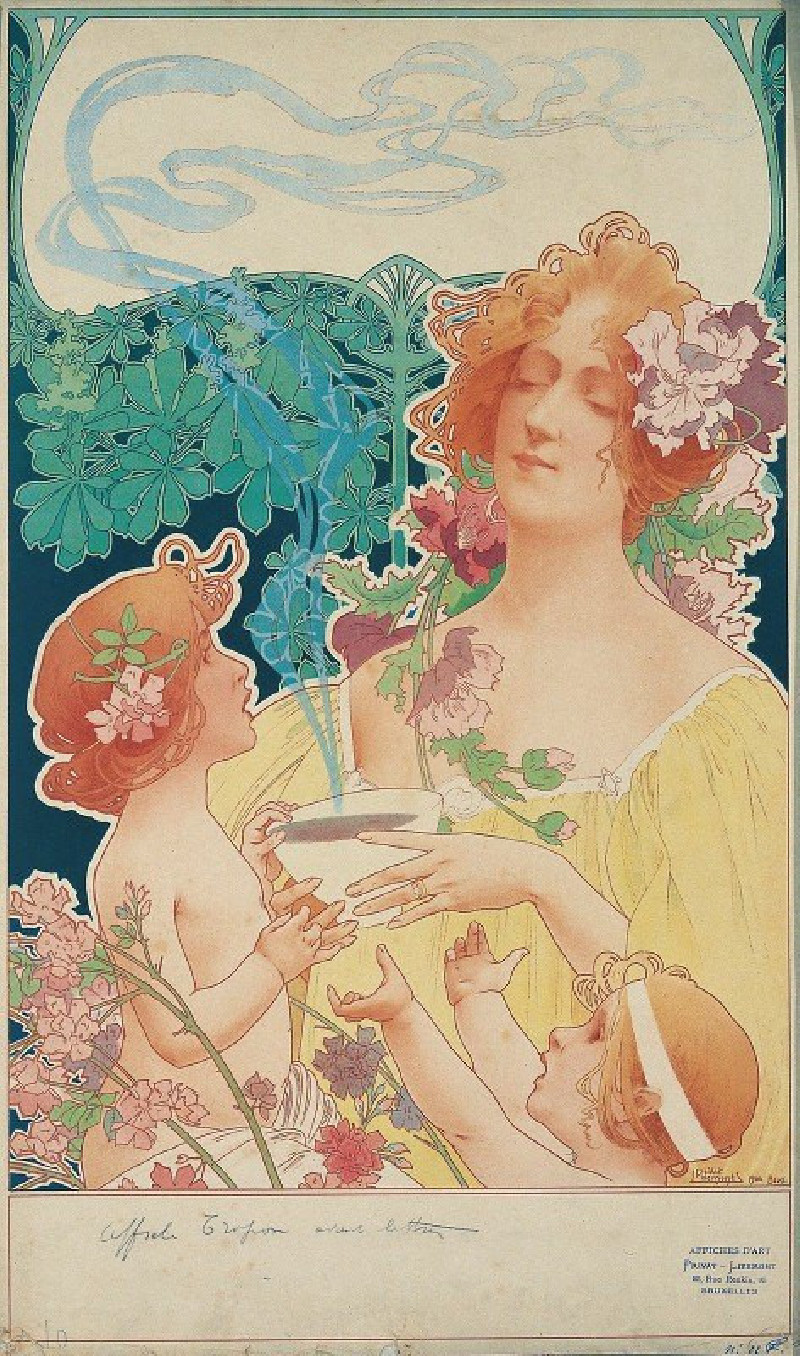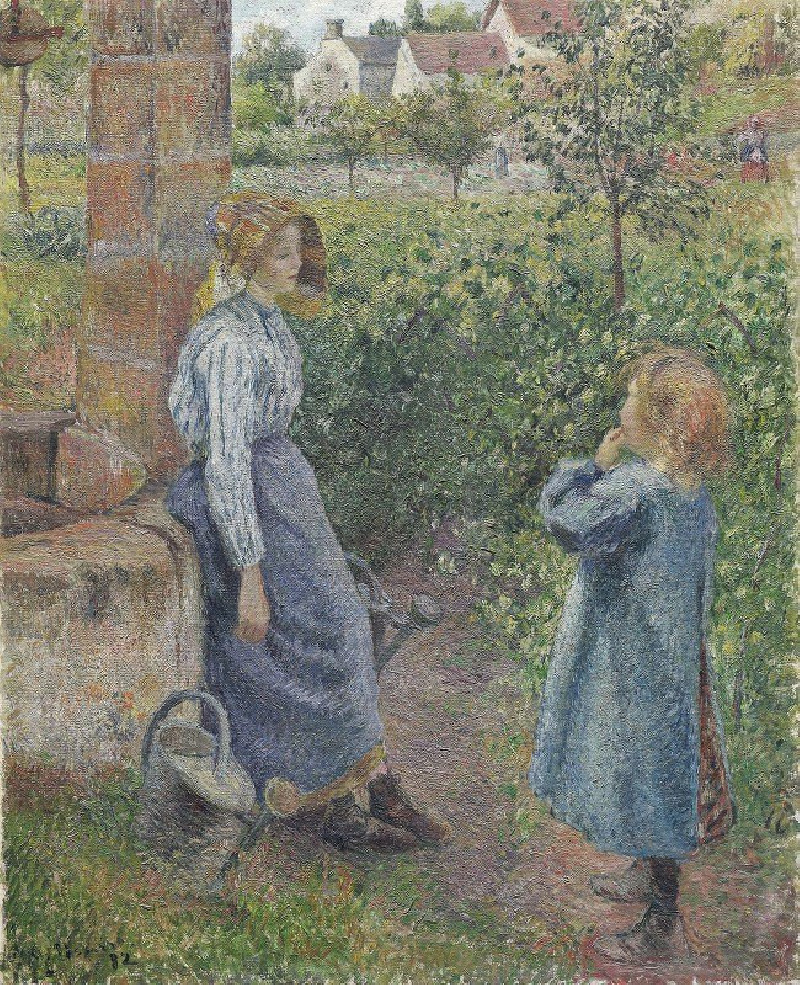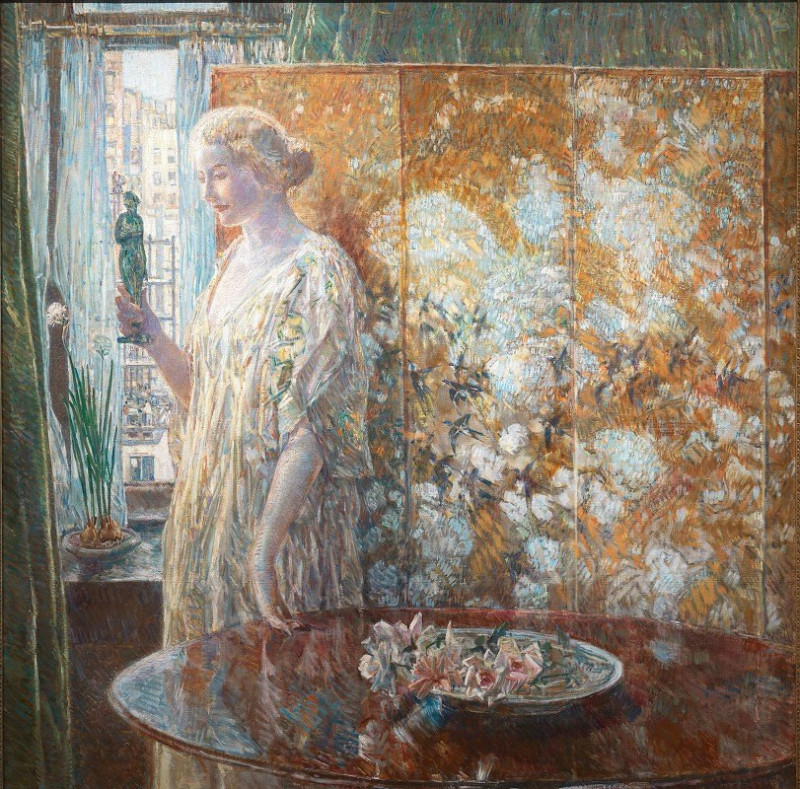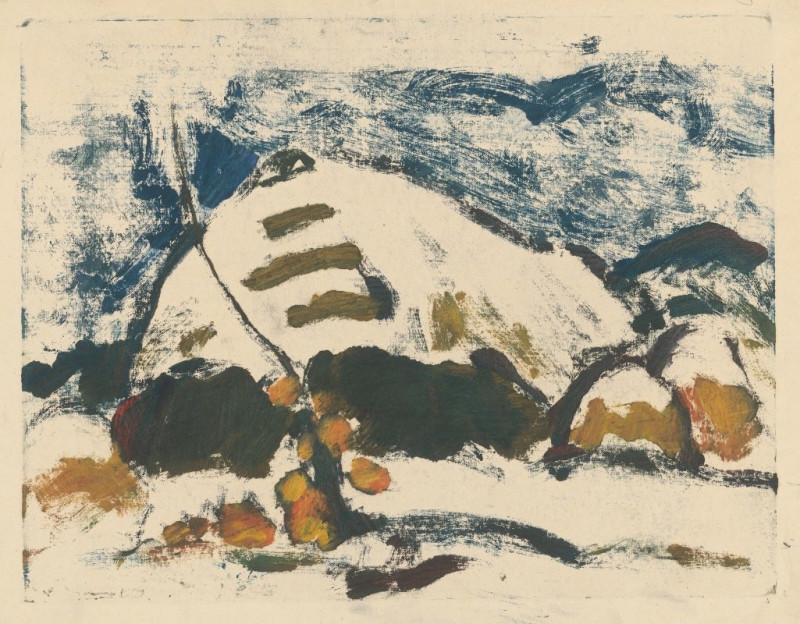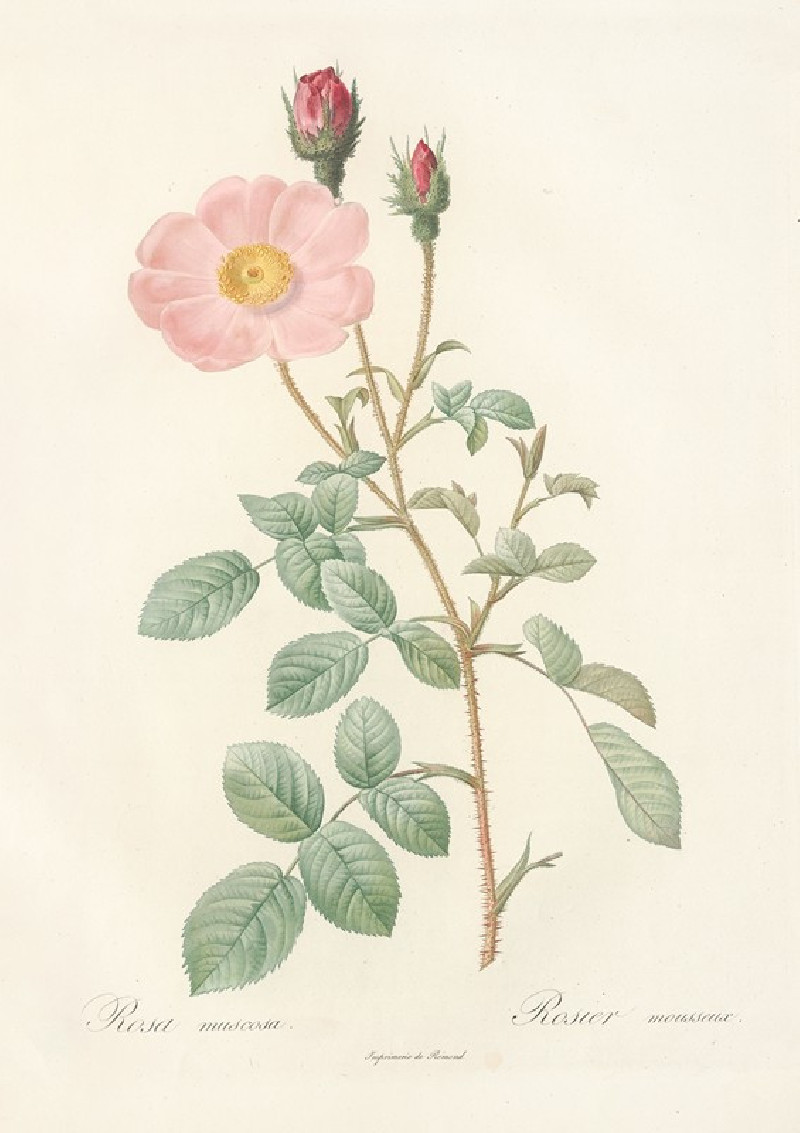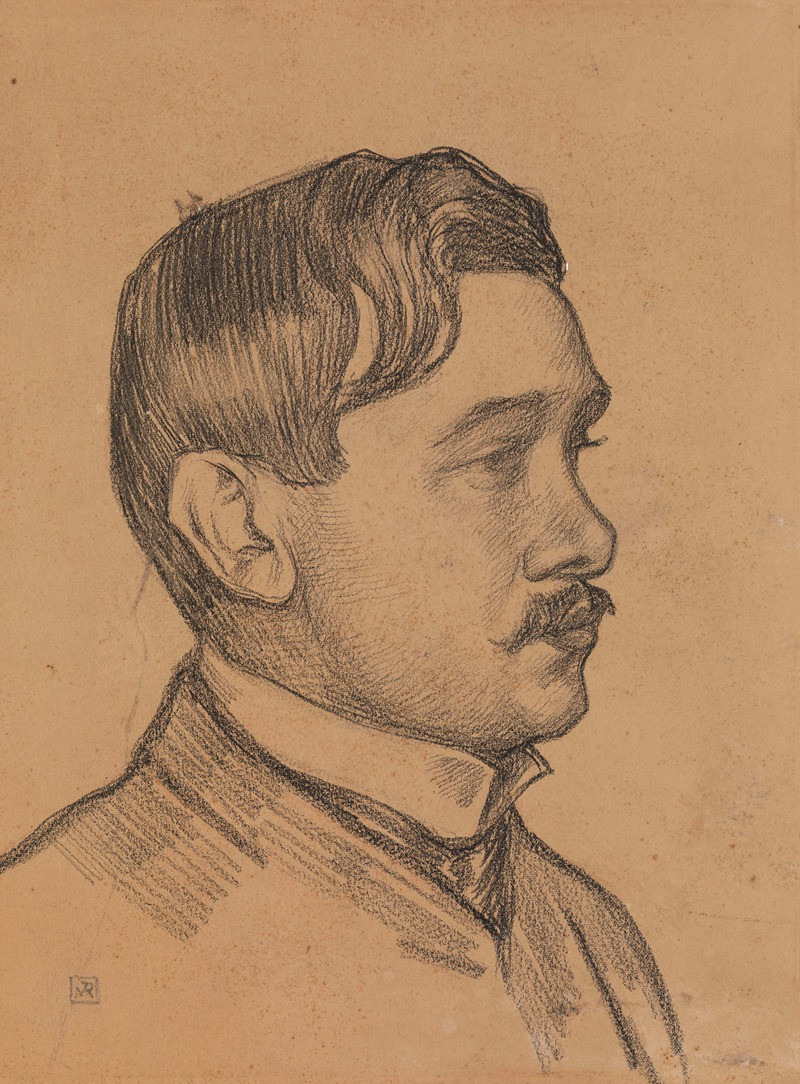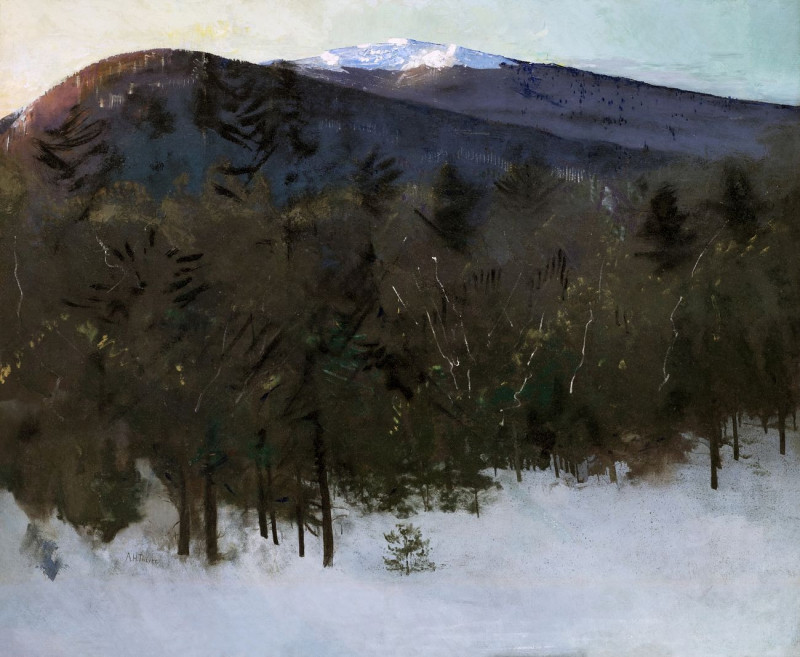The Swineherd (1888)
Technique: Giclée quality print
Recommended by our customers
More about this artwork
Paul Gauguin's "The Swineherd" beautifully captures the essence of rural life through the artist's distinctive Post-Impressionist style. Painted in 1888, during Gauguin's time in Brittany, France, this evocative painting immerses the viewer in a pastoral landscape that is both tranquil and vividly alive.At the heart of the work, a swineherd, clad in a blue smock and a dark hat, stands watching over his pigs—a scene expressing the simple, yet profound daily life of rural folk. The swineherd's thoughtful pose, hand resting gently on his chin, gives him an air of contemplation or perhaps weariness, suggesting a deep connection with the land and his charge.The painting is rich in color, with lush green fields that stretch into the distance beneath a dynamic sky of soft blues and gentle whites. Gauguin's use of bold outlines and flat areas of color lends the landscape a dreamlike quality, while the rolling hills and the spire of a distant church evoke the timeless beauty of the Breton countryside. A lone cow stands near a blossoming bush, adding to the peaceful yet vibrant rural atmosphere.Gauguin’s "The Swineherd" is not only a representation of man's interaction with nature but also a profound statement on the rhythms of rural life. Through this painting, Gauguin offers a window into a world defined by the rhythms of nature and the enduring spirit of the agricultural community in 19th-century Brittany.
Delivery
Returns
Eugène Henri Paul Gauguin was a French Post-Impressionist artist. Unappreciated until after his death, Gauguin is now recognized for his experimental use of color and Synthetist style that were distinct from Impressionism. Toward the end of his life, he spent ten years in French Polynesia. The paintings from this time depict people or landscapes from that region.

